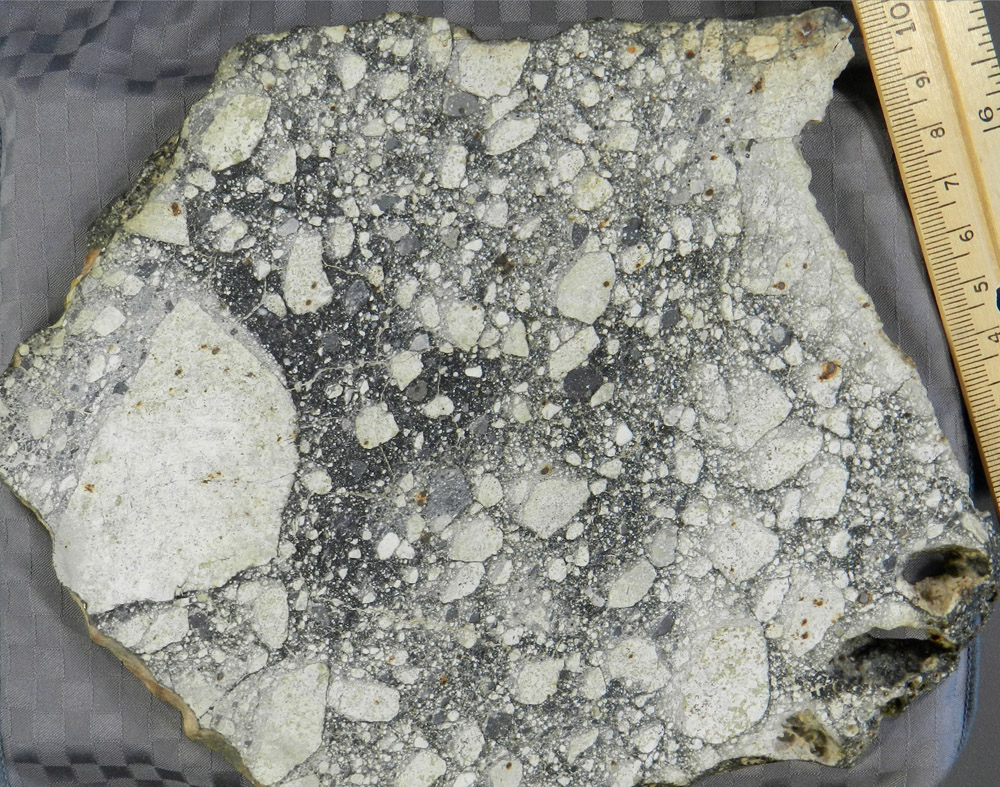Difference between revisions of "September 5, 2014"
| Line 3: | Line 3: | ||
<!-- ws:start:WikiTextHeadingRule:0:<h1> --> | <!-- ws:start:WikiTextHeadingRule:0:<h1> --> | ||
<!-- ws:start:WikiTextLocalImageRule:6:<img src="/file/view/LPOD-Sep5-14.jpg/520891240/LPOD-Sep5-14.jpg" alt="" title="" /> -->[[File:LPOD-Sep5-14.jpg|LPOD-Sep5-14.jpg]]<!-- ws:end:WikiTextLocalImageRule:6 --><br /> | <!-- ws:start:WikiTextLocalImageRule:6:<img src="/file/view/LPOD-Sep5-14.jpg/520891240/LPOD-Sep5-14.jpg" alt="" title="" /> -->[[File:LPOD-Sep5-14.jpg|LPOD-Sep5-14.jpg]]<!-- ws:end:WikiTextLocalImageRule:6 --><br /> | ||
| − | <em>NWA5000 meteorite image from [http://meteorites.wustl.edu/lunar/stones/nwa5000.htm | + | <em>NWA5000 meteorite image from [http://meteorites.wustl.edu/lunar/stones/nwa5000.htm Randy Korotev]</em><br /> |
<br /> | <br /> | ||
| − | Paul Spudis [http://www.airspacemag.com/daily-planet/undocumented-alien-180952618/?no-ist | + | Paul Spudis [http://www.airspacemag.com/daily-planet/undocumented-alien-180952618/?no-ist reports] on a recently found meteorite that seems to be from the Moon, but maybe not. This large meteorite (11 kg) from the desert of NorthWest Africa is chemically and mineralogically like Apollo samples of breccias from the highlands of the Moon. The white pieces are clasts, crushed and fragmented bits of igneous lunar rocks that that got incorporated into this stone. On the Moon that typically happens as impacting projectiles fracture and pulverize existing terrain, with the debris being incorporated into impact melts. The white class are igneous rocks that are common on the Moon, but they contain small dark flecks that are surrounded by rust.The flecks are an iron-nickel alloy called kamacite that is very common in meteorites but very rare in lunar samples. Did meteorite bits get embedded in these clasts? How? Or is there some meteorite parent body out there that makes rocks that look very much like lunar rocks? This NWA meteorite is so newly collected that apparently we don't yet have an important piece of data that will provide critical information: its oxygen isotope ratios. Oxygen isotopes are like finger prints that unambiguously classify meteorites. Lunar ones are different from any other type of meteorite. We await oxygen isotopes for this stone. <br /> |
<br /> | <br /> | ||
| − | <em>[mailto:tychocrater@yahoo.com | + | <em>[mailto:tychocrater@yahoo.com Chuck Wood]</em><br /> |
<br /> | <br /> | ||
<br /> | <br /> | ||
<hr /> | <hr /> | ||
Revision as of 20:12, 17 January 2015
Where'd It Come From?

NWA5000 meteorite image from Randy Korotev
Paul Spudis reports on a recently found meteorite that seems to be from the Moon, but maybe not. This large meteorite (11 kg) from the desert of NorthWest Africa is chemically and mineralogically like Apollo samples of breccias from the highlands of the Moon. The white pieces are clasts, crushed and fragmented bits of igneous lunar rocks that that got incorporated into this stone. On the Moon that typically happens as impacting projectiles fracture and pulverize existing terrain, with the debris being incorporated into impact melts. The white class are igneous rocks that are common on the Moon, but they contain small dark flecks that are surrounded by rust.The flecks are an iron-nickel alloy called kamacite that is very common in meteorites but very rare in lunar samples. Did meteorite bits get embedded in these clasts? How? Or is there some meteorite parent body out there that makes rocks that look very much like lunar rocks? This NWA meteorite is so newly collected that apparently we don't yet have an important piece of data that will provide critical information: its oxygen isotope ratios. Oxygen isotopes are like finger prints that unambiguously classify meteorites. Lunar ones are different from any other type of meteorite. We await oxygen isotopes for this stone.
Chuck Wood



